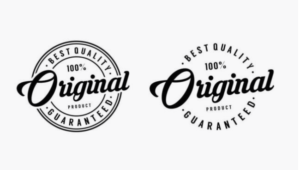How To Create Content And Optimize With SEO: 10 Pro Tips
We may earn money or products from the companies mentioned in this post.
Updated on 02 June 2024
Hi, and welcome to my website. Thank you for stopping by.
In the article below, I will explain how to get content ready and optimize it with SEO according to ten professional tips.
Whether you are a novice in content marketing or a pro marketer, following these tips will help you elevate your SEO strategies and increase your visibility.
To improve your online presence and expand your audience’s reach, follow the steps below.

How to Create content and optimize it for SEO might sound like a daunting task, but it is a strategic way to ensure your online presence is seen and appreciated by the right audience.
In essence, it is about crafting engaging, informative, and valuable content while making it accessible and appealing to search engines.
This combination can significantly boost your visibility, drive organic traffic, and ultimately help you achieve your online goals.
In this guide, we will break down the essential steps to creating content that resonates with your audience and ranks well on search engines.
We will cover the importance of keyword research, the role of high-quality writing, and how to strategically incorporate SEO best practices without compromising the natural flow of your content.
Whether you are a seasoned writer or just starting, these insights will help you navigate the world of SEO with confidence and clarity.
How To Create Content
Having a solid online presence…
Having a solid online presence relies heavily on producing high-quality material that has been optimized for search engines.
Combining these two factors may boost your website’s organic traffic, search engine rankings, and sales.
Knowing your audience and their needs is the first step to developing engaging content.
Get as much knowledge as you can on the topics and jargon related to your industry or line of work.
You may produce interesting, educational, and captivating material for your intended audience by following these tips.
Once you’ve finished writing, you should consider search engine optimization.
It’s crucial to start by placing pertinent keywords thoughtfully in the title, headings, meta tags, and body of the material. But don’t stuff keywords; it makes the text harder to read.
Incorporating keywords naturally ensures that your content remains reader-friendly while still signaling to search engines what your content is about.
Additionally, focus on creating compelling meta descriptions that not only include your primary keyword but also entice users to click through to your site.
Internal and external links add value to your content, enhancing the user experience and providing search engines with context about your page.
By balancing high-quality writing with strategic optimization, you’ll be able to attract and retain an engaged audience, fostering long-term success in your online endeavors.
Try Jaaxy for Free below
Having an online presence largely depends on creating quality content that is good for search engines.
Combining these two factors can increase your website’s organic marketing, search engine rankings, and sales.
Understanding your target audience and their needs is the first step to improving your content mix.
Learn as much as you can about topics and concepts related to your industry or field. With this guidance, you can create interesting, informative, and interesting content for your target audience.
Once you’re done writing, it’s time to think about SEO.
First, make sure you carefully place keywords in the title, meta tags, and body text of your content. However, avoid important content, as it hinders reading.
This way, your content structure will be clear to both people and search engines.
Making sure your website loads quickly and easily on mobile devices is key to optimization.
Sites that are optimized for use on multiple devices rank higher in search results.
Also, use internal links in your content to direct readers to other areas of your site. In addition to making pages easier to navigate, this also helps search engines determine the authenticity and content of each page.
Finally, publish your post online, including on social media and in email newsletters. The more people visit your website, the higher the chances are of them finding your good content.
Combining creative writing with SEO strategies effectively creates valuable content that readers care about and performs well in SERPs.
To improve performance metrics, “content optimization” involves changing digital material.
It is part of the content strategy to analyze material (such as a blog post, video, or eBook) to find and improve its flaws.
What’s the Big Deal About Optimizing Content?

Optimizing content is a big deal because it bridges the gap between creating valuable information and ensuring it reaches your target audience.
When content is optimized, it is not only crafted to be engaging and informative but also tailored to rank well on search engines.
This means using relevant keywords, clear headings, and a mobile-friendly design.
Such strategies help search engines understand your content’s relevance, improving your site’s visibility.
Enhanced visibility leads to increased organic traffic, which can translate into higher engagement, more leads, and better sales.
Essentially, optimization transforms good content into a powerful tool that drives business growth and success in a highly competitive digital landscape.
Here are the steps to getting content ready and optimizing
Here are the steps to getting content ready and optimizing it with SEO.
Run thorough keyword research to identify the terms your target audience will be searching for.
High-quality, interesting content should be developed that seamlessly uses these critical terms.
Structure your content using titles and headers that will break up the content and make it easy to read.
Finally, optimize your images using descriptive file names and including alt text.
Make sure your content is mobile-responsive and loads quickly.
Share your content on social media and build backlinks to improve the ranking and visibility of your content.
Why? Maybe, though.

Optimizing content is a big deal because it bridges the gap between creating valuable information and ensuring it reaches your target audience.
When content is optimized, it’s not only crafted to be engaging and informative but also tailored to rank well on search engines.
This means using relevant keywords, clear headings, and a mobile-friendly design. Such strategies help search engines understand your content’s relevance, improving your site’s visibility.
Enhanced visibility leads to increased organic traffic, which can translate into higher engagement, more leads, and better sales.
Essentially, optimization transforms good content into a powerful tool that drives business growth and success in a highly competitive digital landscape.
However, if the keywords you’ve used receive very few monthly searches, your content won’t attract much traffic.
Providing more detailed information on your subject can help, but it needs to be structured properly for Google bots to understand.
Consistent header formatting and descriptive titles are crucial for this.
Don’t let your content get sucked into the Google black hole due to poor optimization.
Even if you’ve authored the best essay ever, full of groundbreaking ideas and actionable guidance, it won’t help you reach your content marketing objectives if it’s not optimized for search engines.
To ensure your content reaches the right people, follow our guidelines to avoid these pitfalls and keep your content marketing plan on track through effective optimization.
Best practice: create content and use Optimization with SEO

Best practices for creating content and using SEO optimization involve several key steps to ensure your content is both engaging for readers and attractive to search engines.
Start with thorough keyword research to identify terms that your target audience frequently searches for, ensuring these keywords are relevant and have a healthy search volume.
Integrate these keywords naturally into your content, including in titles, headings, meta descriptions, and throughout the body text, without overstuffing them.
Organize your content with clear headings and subheadings to enhance readability and help search engines understand the structure and relevance of your information.
Additionally, ensure your website is fast-loading and mobile-friendly, as these factors significantly impact search engine rankings.
Internal linking is another crucial aspect, guiding readers to other relevant sections of your site and helping search engines establish a clear hierarchy of your content.
Finally, promote your content through social media, email newsletters, and other channels to increase visibility and drive traffic.
By combining high-quality content creation with these SEO strategies, you can improve your search engine rankings, attract more visitors, and achieve your content marketing goals effectively.
Improve Content Quality and Style

Improving content quality and style is essential for engaging your audience and enhancing your SEO efforts.
Start by focusing on clarity and readability: use simple, concise language and break up large chunks of text with headings, bullet points, and short paragraphs.
Ensure your content is well-researched and accurate, providing value by addressing the needs and questions of your readers.
Incorporate a variety of sentence structures to keep the text dynamic and interesting, and use a conversational tone to make the content more relatable.
Adding relevant visuals, such as images, infographics, and videos, can also enhance the reader’s experience.
Finally, proofread meticulously to eliminate any grammatical errors or typos and ensure your content maintains a consistent and engaging style throughout.
By prioritizing these elements, you can create high-quality content that not only attracts but also retains and converts your audience.
Tips for Writing Improvement
Improving your writing involves practicing a few key strategies to enhance clarity, engagement, and effectiveness.
Start by planning your content with an outline to ensure a logical flow of ideas. Focus on writing clear, concise sentences, avoiding unnecessary jargon and complex language. Use active voice to make your writing more direct and impactful.
Vary your sentence structures to maintain reader interest, and employ transitions to ensure smooth flow between paragraphs. Read your work aloud to catch awkward phrasing and check for readability.
Editing and revising are crucial—take the time to refine your content, eliminate redundancies, and correct any errors. Additionally, expand your vocabulary and read widely to see how other authors effectively convey their ideas.
Finally, seek feedback from others to gain new perspectives and identify areas for improvement. By consistently applying these tips, you can significantly enhance the quality of your writing.
Unlock the Secrets: Essential Copywriting Techniques to Elevate Your Content Quality

Unlock the secrets of the best copywriting by using essential strategies that improve your content quality.
Start by creating a headline that grabs attention and encourages readers to investigate further.
Focus on understanding your audience’s needs and pain points to create relevant and engaging content.
Use a story to make your message more memorable and relevant. Use clear and persuasive language, and avoid jargon and complex sentences that may confuse the reader.
Add a call to action to direct your audience to the desired action.
Also, use emotion to connect with readers on a personal level, and use a consistent tone and voice to build trust and confidence.
By mastering these techniques, you can create powerful, effective copy that attracts and converts your target audience.
Do your readers read your material or use the dictionary?

When your readers engage with your material, do they find themselves seamlessly absorbing the content, or do they frequently pause to consult the dictionary?
It is essential to consider the accessibility of your writing.
While a rich vocabulary can enhance the sophistication of your prose, excessive use of complex terminology might hinder comprehension for some readers.
Striking a balance between depth and clarity is key. Aim to communicate your ideas effectively without sacrificing readability.
Define technical terms when necessary, but also strive to maintain a fluid narrative that guides readers through your content effortlessly.
Remember, the goal is not to showcase your mastery of language at the expense of your audience’s understanding but to convey your message in a way that resonates with and empowers your readers.
By prioritizing clarity and accessibility, you can ensure that your material is not just read but truly understood and appreciated.
Keep your writing tone consistent

Consistency in writing tone is paramount for building trust and fostering engagement with your audience.
Whether you are crafting a blog post, a social media caption, or an email newsletter, maintaining a consistent tone throughout your content helps establish your brand’s voice and identity.
This consistency enables readers to form a connection with your brand as they come to recognize and appreciate the personality behind the words.
Whether your tone is formal and authoritative or casual and conversational, ensure that it aligns with your brand values and resonates with your target audience.
A consistent tone not only reinforces your brand’s image but also enhances readability and comprehension, making it easier for readers to connect with and absorb your message.
By staying true to your established tone across all your communication channels, you can cultivate a cohesive and memorable brand identity that leaves a lasting impression on your audience.
10 Pro Tips

If you want more organic traffic and higher search engine rankings, you must create high-quality content and optimize it for SEO.
Ten search-engine-optimized content tips from industry professionals.
- Conduct extensive keyword research to discover the terms your intended audience uses when looking online.
- Find high-volume keywords with low competition by utilizing a service like SEMrush or Google’s own Keyword Planner.
- Create Enticing Headlines: Use your target keywords in headlines that grab readers’ attention and make them want to read more.
- Create original, insightful, and valuable material that answers the questions and solves the problems of your intended readers.
- In addition to drawing in new visitors, this will make them want to spend more time exploring your site.
- Keywords should be strategically used in the title tag, meta description, headings, subheadings, and throughout the content body without disrupting the writing flow.
- Create intriguing meta descriptions that appropriately summarize each page’s content and entice readers to click through from search engine results pages (SERPs).
- Make your information easy to read by dividing it into small paragraphs and including bullet points, headings, and subheadings.
- Remember the power of visuals to break up blocks of text?
- Include internal links in your material to direct readers to other relevant site sections.
- As a result, your site’s visitors will have a better time and be more likely to look around.
- Ensure your website displays correctly on mobile devices, as Google now uses mobile-friendliness as a ranking signal.
- Optimize the speed at which a page loads by using strategies like image compression, script magnification, browser caching, and a reputable hosting service.
- Review and Refresh Content Regularly Make sure your content is current by evaluating it and updating it with new data, figures, or examples.
Doing this tells search engines that new content is being added frequently and that the site is being actively managed.
Doing this tells search engines that new content is being added frequently and the site is being actively managed.
Boost your website’s exposure, pull in more organic visitors, and move up the SERPs by following these 10 expert suggestions for content creation and optimization with SEO.
Bonus

10 SEO Pro Tips
Online success requires keeping up with SEO best practices in an ever-changing world.
We’ve prepared 10 SEO recommendations to boost your website’s exposure and organic traffic.
- Optimize website loading speeds to improve the user experience.
- Compress pictures, minify CSS and JavaScript files, cache material, and use a CDN for faster asset delivery.
- Use structured data markup: Add schema markup to relevant pages to provide search engines with more context.
- Doing this can improve your website’s search results with rich snippets and other visuals.
- Track website performance with Google Analytics or Search Console.
- Use organic traffic, bounce rates, and conversion rates to find areas for improvement.
- Keep up with industry trends: SEO is a dynamic sector, so it’s essential to stay current on algorithm adjustments, trends, and best practices.
- Focus on providing good material that naturally attracts links.
- To remain ahead, read renowned SEO blogs, attend seminal conferences, and join the professional forum
- These ten best practice SEO tactics can help you increase your website’s search engine rankings, targeted visitors, and online success.
How to create unique content

Creating unique content requires a combination of creativity, research, and authenticity. Start by identifying your niche and audience, and understanding their interests, needs, and pain points.
Conduct thorough research to uncover trending topics, gaps in existing content, and opportunities to offer a fresh perspective.
Then, brainstorm innovative ideas and angles that differentiate your content from others in your field. Infuse your personal experiences, insights, and expertise into your writing to add a unique voice and perspective.
Utilize multimedia elements, such as images, videos, and infographics, to enhance your content’s visual appeal and engagement.
Remember to stay true to your brand identity and values, as authenticity is key to building trust and credibility with your audience.
By embracing your individuality and offering valuable, original insights, you can create content that stands out and resonates with your readers.
Here are some proven methods to help you develop original material:

You’ll be able to show that you’re current on the issues by offering novel takes on hot themes.
The process of coming up with original material is one that always continues.
Constantly evaluate and adjust your strategy to guarantee your readers with the most up-to-date and relevant information possible.
Doing so will help you become known as an expert in your industry, earning you respect and admiration from your peers.
- Recognize what makes you different from others in your field and focus on developing that.
- You can use your knowledge, and life experiences, or take on a topic to give your writing a new spin and attract more readers.
- Do in-depth research: Before writing about a given issue, ensure you fully grasp the material.
- Doing this will allow you to offer fresh perspectives and avoid rehashing common knowledge.
- Third, cater to your audience by considering their wants and requirements.
- You can find niche-specific gaps and unanswered questions by conducting surveys, participating in social listening, and analyzing data.
- You may differentiate yourself by filling these voids with carefully crafted material based on extensive research.
- Embrace originality and try new things, such as formats, narrative approaches, or graphic components.
- Use multimedia components like films, infographics, and interactive features to inject originality into your content production.
- Fifth, use anecdotes: people connect with genuineness.
- Tell stories from your own experience or provide examples from the industry to demonstrate how you overcame obstacles and succeeded.
- Doing this makes your work stand out from the crowd and increases your credibility with your audience.
- Connect with professionals in your field and have them contribute to your platform through interviews or guest blogs.
- Their participation can enrich your material with fresh ideas and information and open doors to new professional relationships.
- Keep an eye on industry trends and use them creatively in your content plan when appropriate.
Pro Tips
- Use capitals for your headline.
- Use Numbers in your headline.
- Write short paragraphs of no more than 2 lines.
- Use a number inside your headline.
Thinking about SEO Keyword

When considering SEO keywords, delve into thorough research to uncover the terms and phrases that align with both your content and your audience’s search intent.
Start by brainstorming a list of potential keywords related to your topic, then utilize keyword research tools such as Google Keyword Planner, SEMrush, or Ahrefs to analyze search volume, competition, and relevancy.
Look for long-tail keywords, which are more specific and targeted, and consider the user intent behind the search queries.
Incorporate keywords naturally into your content, including in titles, headings, meta descriptions, and throughout the body text, while avoiding keyword stuffing.
Additionally, pay attention to keyword variations and synonyms to capture a broader range of search queries.
Regularly monitor and analyze your keyword performance to identify opportunities for optimization and refinement.
By strategically selecting and integrating relevant keywords into your content, you can improve its visibility and ranking in search engine results, ultimately driving more organic traffic to your website.
Understanding Consumer Intent: Navigating Between Decision-Making and Exploration

Understanding consumer intent is a pivotal aspect of effective marketing strategies.
When consumers browse online, they may be in different stages of the purchasing journey—some actively seeking information to make a decision, while others are simply exploring options.
Recognizing these distinct behaviors can inform your approach to content creation and advertising.
For those in the decision-making phase, providing detailed product information, comparisons, and customer reviews can be invaluable in facilitating their purchase journey.
Contrarily, for those in the exploration phase, offering engaging and informative content that showcases your brand’s values, expertise, and unique selling points can help establish brand awareness and trust.
By understanding and catering to the varying intents of consumers, businesses can tailor their marketing efforts to effectively engage and convert potential customers at every stage of the buying process.
Be a “Link Magnet.”
Become a “link magnet” by strategically leveraging your understanding of consumer intent to attract high-quality backlinks and enhance your website’s authority and visibility.
Craft compelling and informative content that addresses the needs and interests of your target audience, positioning your website as a valuable resource within your industry.
Incorporate data-driven insights, expert opinions, and actionable advice to establish credibility and encourage others to reference and link to your content.
Additionally, engage with industry influencers and thought leaders, collaborating on content partnerships or guest blogging opportunities to expand your reach and attract inbound links from authoritative sources.
By consistently producing valuable and shareable content that resonates with your audience, you can naturally attract links, strengthen your website’s SEO performance, and solidify your position as a trusted leader in your field.
Make your content backlink-friendly:

To make your content backlink-friendly, focus on creating valuable and authoritative material that naturally attracts links from other websites.
Start by conducting thorough research to identify relevant topics and trends within your industry.
Craft in-depth and informative content that offers unique insights, data-driven analysis, or actionable advice, positioning your website as a valuable resource for your target audience.
Incorporate multimedia elements such as images, videos, and infographics to enhance visual appeal and shareability.
Additionally, optimize your content for search engines by including relevant keywords, clear headings, and meta descriptions.
Encourage engagement and sharing by enabling social sharing buttons and fostering a sense of community through comments and discussions.
Finally, actively promote your content through email outreach, social media, and collaborations with influencers and industry leaders to amplify its reach and attract organic backlinks from reputable sources.
By prioritizing quality, relevance, and promotion, you can create content that naturally earns backlinks, enhancing your website’s authority and search engine rankings.
Take advantage of trends
Create fresh and informative material on the newest trends and topics that backlink producers in your industry are interested in.
Don’t do it just for fun; if you have something worthwhile to say, this is a terrific approach to strategizing backlinks.
Make your voice known. As noted, a unique voice sets you apart and builds loyalty.
Andy Crestodina, author and co-founder of Orbit Media Studios, has a distinct writing and speaking style that marketers and business executives love, helping him establish a loyal following that generates backlinks.
FAQ
Q. What is Content marketing?
Content marketing involves developing helpful, instructive, engaging, and relevant videos, graphics, blogs, product sites, and other digital assets.
Great content builds trust, authority, and brand awareness by meeting the demands of a unique and engaged audience.
Q. Why does content marketing matter?
Effective content marketing engages your brand beyond conversions.
Creating digital assets that meet customers’ daily needs builds brand loyalty, trust, and sales funnel coverage.
Q. Content marketing strategy?
Comprehensive content plans address your brand’s short- and long-term aims.
Content marketers test and optimize blogs, emails, social media, podcasts, and more to reach the appropriate audience at the right time.
Q. What distinguishes content marketing from SEO?
SEO and content marketing are similar, but we consider them art and science.
SEO is science and content marketing is art.
Content marketing informs your target audience in several ways to boost your brand’s image.
The content can be creative and varied!
Technical and scientific SEO involves keyword objectives, metadata, links, site speed, and more.
Summary
Optimizing your content must be an integral part of your overall content strategy.
It improves your chances of being found in search results for your desired keywords, establishing credibility for your business and turning visitors into paying clients.
Remember that your target audience consists of actual people, not robots.
Put into practice what you’ve discovered by studying the competition.
Using the resources discussed in this piece, you may carry out and expedite many of these procedures, putting your material in the best possible position for success before and after publication.
I hope How To Create Content And Use Optimization With SEO 10 Pro Tips helped you; Please leave questions and comments in the space below.
I would much appreciate it if you could kindly leave your comments and questions below.
Thank You For Stopping By Once More
Thanks for reading my article
Till The Next Time
Elke
Author







